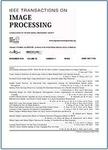版权所有:内蒙古大学图书馆 技术提供:维普资讯• 智图
内蒙古自治区呼和浩特市赛罕区大学西街235号 邮编: 010021

作者机构:Southeast Univ Minist Educ Sch Biol Sci & Med Engn Key Lab Child Dev & Learning Sci Nanjing 210096 Jiangsu Peoples R China Univ Oulu Ctr Machine Vis & Signal Anal Faulty Informat Technol & Elect Engn FI-90014 Oulu Finland Nanjing Univ Sci & Technol Sch Comp Sci & Engn Nanjing 210094 Jiangsu Peoples R China
出 版 物:《IEEE TRANSACTIONS ON IMAGE PROCESSING》 (IEEE图像处理汇刊)
年 卷 期:2018年第27卷第5期
页 面:2484-2498页
核心收录:
学科分类:0808[工学-电气工程] 08[工学] 0812[工学-计算机科学与技术(可授工学、理学学位)]
基 金:National Basic Research Program of China [2015CB351704] National Natural Science Foundation of China [61231002, 61572009, 61772276, 61602244] China Scholarship Council Scientific Research Foundation of Graduate School, Southeast University [YBJJ1774] Academy of Finland Tekes Fidipro Program University of Oulu, Finland Infotech Oulu Nokia Foundation Finnish Cultural Foundation
主 题:Cross-database micro-expression recognition micro-expression recognition domain adaptation transfer learning
摘 要:Recently, micro-expression recognition has attracted lots of researchers attention due to its potential value in many practical applications, e.g., lie detection. In this paper, we investigate an interesting and challenging problem in micro-expression recognition, i.e., cross-database micro-expression recognition, in which the training and testing samples come from different micro-expression databases. Under this problem setting, the consistent feature distribution between the training and testing samples originally existing in conventional micro-expression recognition would be seriously broken, and hence, the performance of most current well-performing micro-expression recognition methods may sharply drop. In order to overcome it, we propose a simple yet effective framework called domain regeneration (DR) in this paper. The DR framework aims at learning a domain regenerator to regenerate the micro-expression samples from source and target databases, respectively, such that they can abide by the same or similar feature distributions. Thus, we are able to use the classifier learned based on the labeled source micro-expression samples to predict the label information of the unlabeled target micro-expression samples. To evaluate the proposed DR framework, we conduct extensive cross-database micro-expression recognition experiments designed based on the Spontaneous Micro-Expression Database and Chinese Academy of Sciences Micro-Expression II Database. Experimental results show that compared with the recent state-of-the-art cross-database emotion recognition methods, the proposed DR framework has more promising performance.